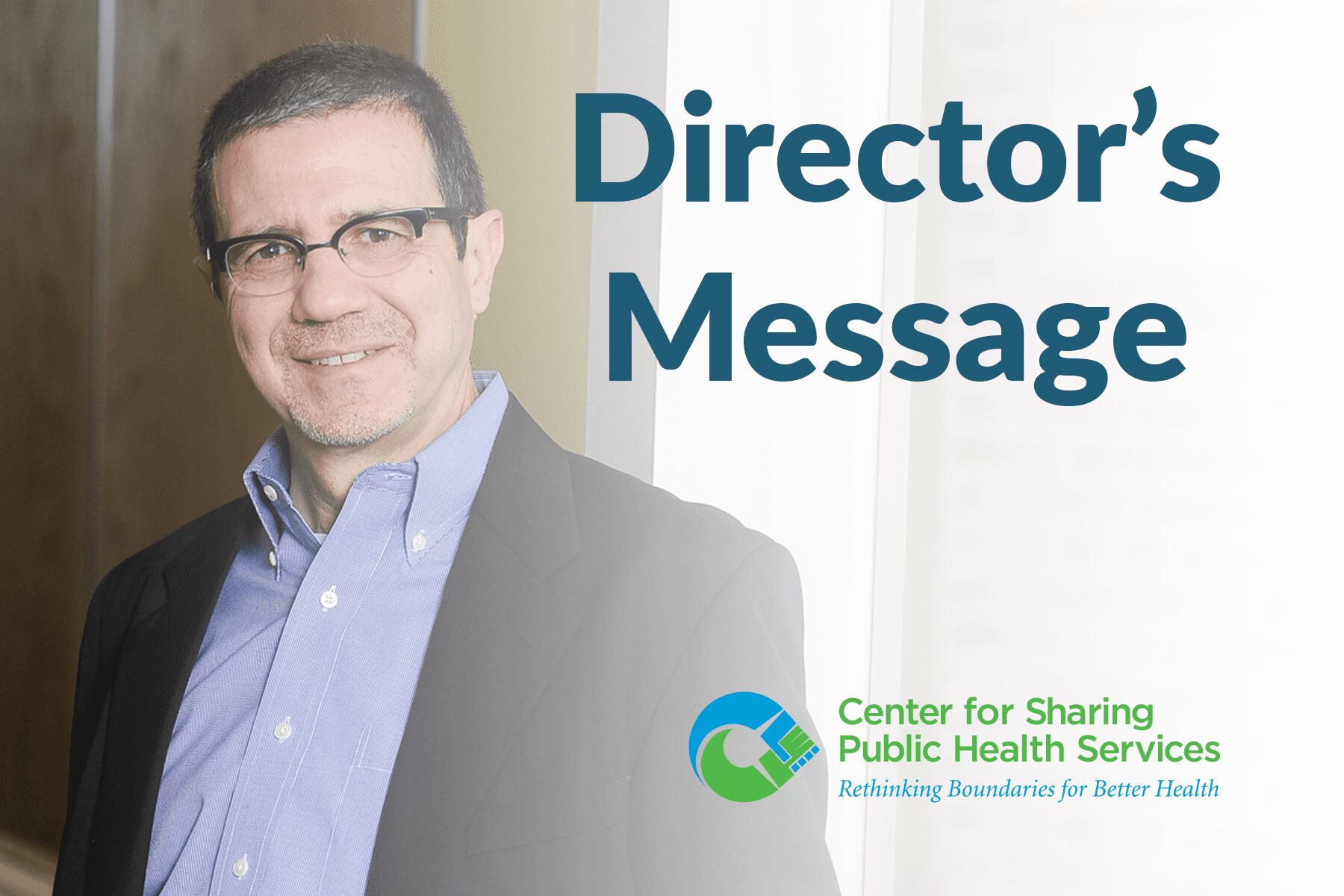A Message from the Director of the Center for Sharing Public Health Services
After almost 10 years of managing the Center for Sharing Public Health Services, I have decided that it’s time to retire. Recently, I sat down with Grace Gorenflo, the Center’s Deputy Director, to reflect on our past 10 years of activities. You can listen to our conversation in the video below. In this column, I’m going to hit the highlights of our discussion.
The Importance of Resource Sharing
Earlier in my career, I was the State Epidemiologist for Kansas. In that position, I had the opportunity to directly experience the challenges of having a political system that includes 105 counties covered by 100 local health departments, many of which were extremely small, understaffed, underfunded and could barely assure basic public health services.
When I left my position with the state and joined the Kansas Health Institute, I worked with the Kansas Association of Local Health Departments to explore alternative models for the public health system in Kansas, which is a very strong home rule state. We were trying to avoid the C word (consolidation) at all costs, but we thought there were alternative models, like resource sharing, that could improve the effectiveness and efficiency of the Kansas public health system.
Since becoming the Director of the Center for Sharing Public Health Services, I’ve been able to focus exclusively on resource sharing for almost a decade now. We’ve learned a lot during that time, including that resource sharing is a very effective tool that can help modernize the public health system. We’ve also learned some important lessons about how to build sustainable partnerships for resource sharing. I’m going to share just a few of those lessons in this column.
The Human Side of Resource Sharing
One thing we learned very early on is that before health departments and health boards jump into the technical aspects of resource sharing (i.e., what kind of contract or memorandum of understanding is needed, who is going to be the leader of this joint effort, how will decisions be made, etc.) there are human aspects that must be addressed and must take priority. Many health departments want to start by looking at the “how” of resource sharing and not so much the “why.” However, we quickly learned that relationships and trust are more important than the technical aspects. That was an eye opener and really one of the first critical lessons we learned. Coming to agreement on the goals for the sharing arrangement (i.e., expanding services, improving services, saving money, etc.), understanding the history that people and organizations have of working together, attending to change management — all of these things are very important. So much so that the Center listed those items in one of its flagship documents, Factors that Contribute to a Successful Sharing Arrangement.
A Roadmap for Resource Sharing
For me, the most valuable product, the signature product, of the Center remains the Roadmap to Develop Sharing Initiatives in Public Health. It was really a distillation of learnings from the first several months of activities. While we went through a couple of minor revisions, I am really surprised, even after almost 10 years, about how well the Roadmap holds and how relevant it feels. As the Center expanded its focus from cross-jurisdictional sharing among health departments to include cross-sector collaborations involving health departments and other types of organizations, I was surprised how much of the original Roadmap still applied. It really is striking how many times the Roadmap has been affirmed. The Center has learned about so many nuances of the various phases of the Roadmap that it’s been a really valuable tool when providing technical assistance.
COVID-19 and Resource Sharing
It was only natural for health departments to come together to partner on things like case management, contact tracing and all the different responsibilities that came with the pandemic. We saw examples in which existing partnerships were strong enough to weather these new challenges and even grow because of them. However, we also experienced examples where there was a little bit of a retreat from a resource sharing, which seemed to happen more often when those partnerships were either more recent or not as strong.
We also saw some partnerships that were formed at the last minute just to share resources during the pandemic, and some of those partnerships worked better than others. There is no doubt in my mind that during an emergency is not the right or the easiest time to build relationships that were not there before. You can nurture pre-existing relationships and grow them stronger during an emergency, but it’s hard to start them. To read more about this subject, see one of our newer documents, Sharing Resources During the COVID-19 Pandemic.
I also want to note that I was amazed by how people could become creative to address new needs initiated by the pandemic, while at the same time remaining focused and centered on their other goals and never losing their focus on the importance of health equity.
Stay Tuned for More on Resource Sharing
As I step down at the end of 2021, I want you to know I’m leaving the Center in very capable hands. Current Center Deputy Director Grace Gorenflo — who has been with us since the beginning and was very instrumental in developing the concept of the Center — will assume the role of Center Director in January 2022. Stay tuned!
Do you have questions or comments? You can reach us at phsharing@khi.org.
Gianfranco Pezzino, Director
